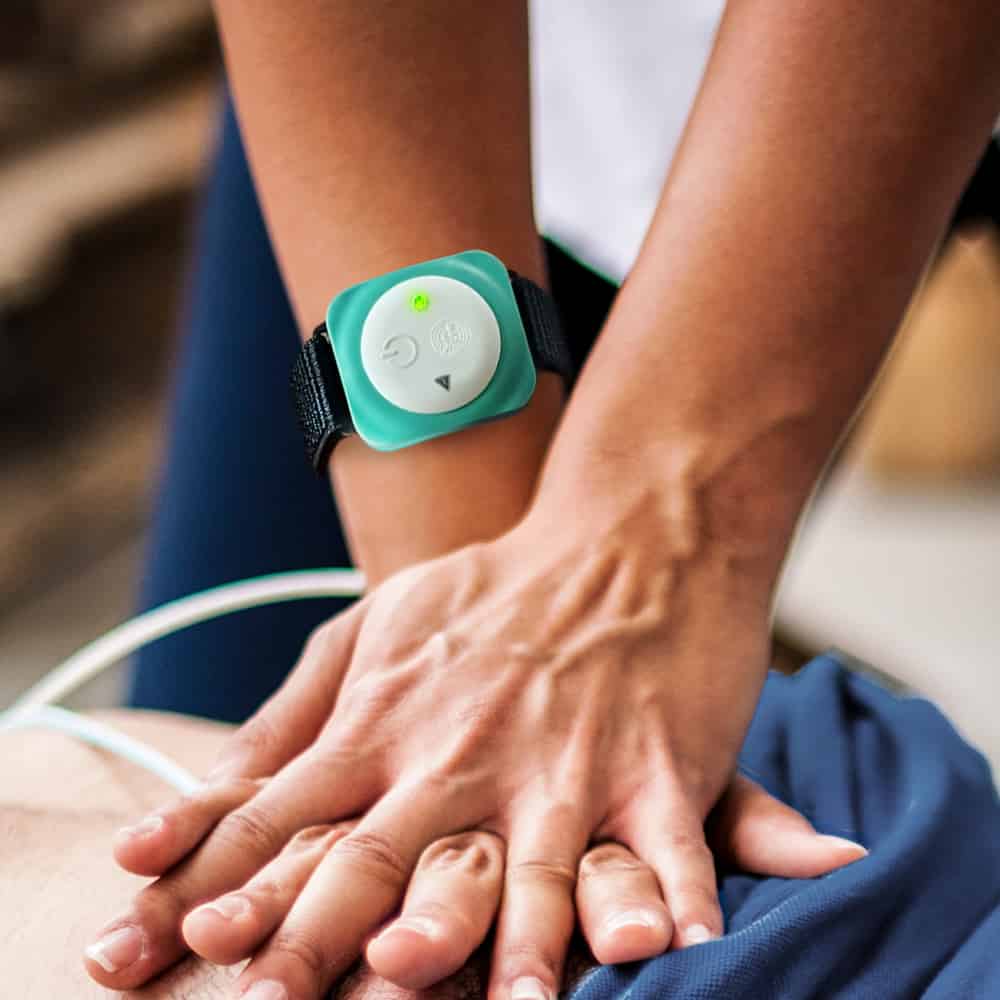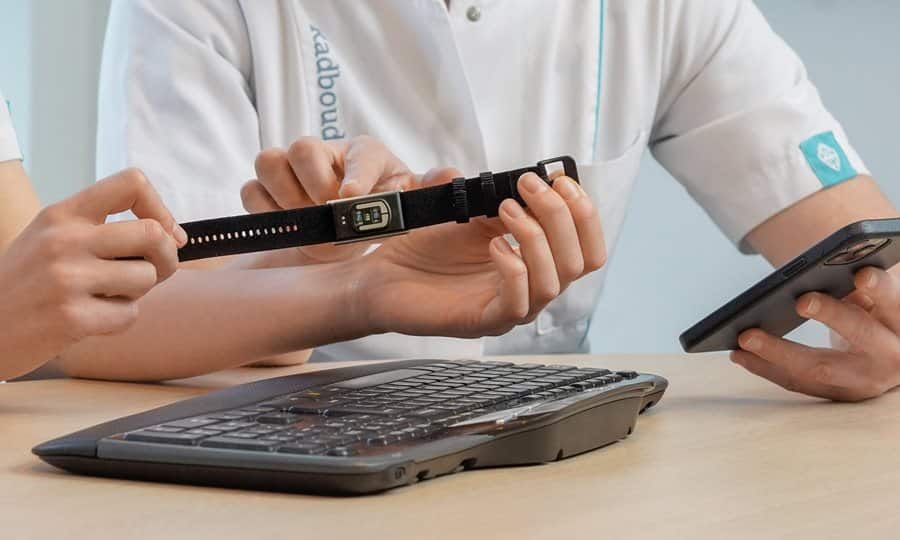
About SimCPR
- Founders: Harry Palsma and Erik Damen
- Founded in: 2013
- Employees: 2
- Money raised: -
- Ultimate goal: Improve the quality of chest compressions and make emergency responders more confident.
Every day, 35 people die of cardiac arrest in the Netherlands. Applying pressure on the chest can save lives, but it must be performed correctly. Harry Palsma, who previously introduced AEDs in the Netherlands with his Medizon Foundation, came up with a solution and, together with Erik Damen, founded SimCPR Medical. They developed a wristband that can be worn during training and real-life situations to provide emergency responders with feedback. In this episode of Start-up of the Day, Palsma talks about his invention.
Why does the world need a chest compression wristband?
“More and more people are taking training courses on how to perform CPR. A study in 2010 showed that after 30 years of CPR education, worldwide survival from cardiac arrest had remained the same. One reason is that people are too cautious about pressing the chest during CPR. This is especially true of bystanders who have little to no experience with applying pressure to the chest. They are afraid of doing harm and are startled when they hear the chest cracking, for example, but in reality if you press hard enough and apply pressure to the chest compressions, the chance of survival doubles.”
How exactly does the wristband work?
“Based on an accelerometer. This measures very precisely the distance covered and the rate of cardiac massage movements The general rule is that you have to press the chest more than five centimeters. If you stay below that, the red light on the wristband will keep flashing. Once you press hard enough at the right pace, then the green light comes on.
In addition to the wristband for patient CPR, we also have a version for training purposes that you can pair with an app for additional feedback. The wristbands tell you if you are pressing hard enough and at the right pace. It’s a relatively inexpensive product – both wristbands cost less than €100 – and therefore widely applicable.
You don’t have to wear the wristband all day long, by the way. It is also possible to hang it near an AED or in a carrying case, for example, so that you have it at hand as soon as it is needed.”

Who is your target audience?
On the one hand, we target first responders. Sometimes they have to perform CPR even though it has been years since they took a course. They can then make good use of the feedback from the tape. On the other hand, there is ambulance personnel. They do not always find it necessary to use an aid. Nevertheless, various tests show that they too need to be corrected. Technology passes very hard judgment, of course. They often already do a very good job, but this way it can be even better.”
Have you ever resuscitated someone yourself? And would you personally enjoy using the wristband?
“Until recently, I would have answered no to this. But I am a citizen rescuer and the other day I was called to volunteer to perform CPR on a person who was in cardiac arrest. When I arrived, the police were already busy. I saw that the chest wasn’t being pressed hard enough. That’s when I took over. At one point while performing CPR, I heard the cartilage cracking and people around me yelled that I was pressing too hard but I knew I was doing the right thing. In the end, the patient survived, thankfully.

I myself would also like to use the wristband. At least that way you can be sure you did it right. Three-quarters of CPR patients in our country are not successfully resuscitated. At least with the CPR wristband, you don’t keep wondering if you could have done better.”
What challenges are you currently running into?
“It is very difficult to attract capital in the Netherlands. I find investment funds in our country too reluctant when it comes to investing in innovative technologies that advance the medical sector. We spent seven years developing an effective product. Our research also shows that more than 80 percent of first responders would like to have a wristband. But then it’s incredibly difficult to find investors who want to help us move forward. I think it is because there is too little medical knowledge in the relevant circles on how to assess the value of a medical product. As a result, innovative and knowledge-intensive companies that are doing good work are disappearing. I think that’s a shame.”
What does the future of your company look like?
“In the coming period, we are going to focus on marketing our product. My associate and I have medical and technical backgrounds, but we are not sales guys, so we need to strengthen our team to start marketing our product globally. Once we have overcome our challenges, I am confident that we will be a leading company in the field of cardiac massage feedback.”
Read all previous start-up stories here.







